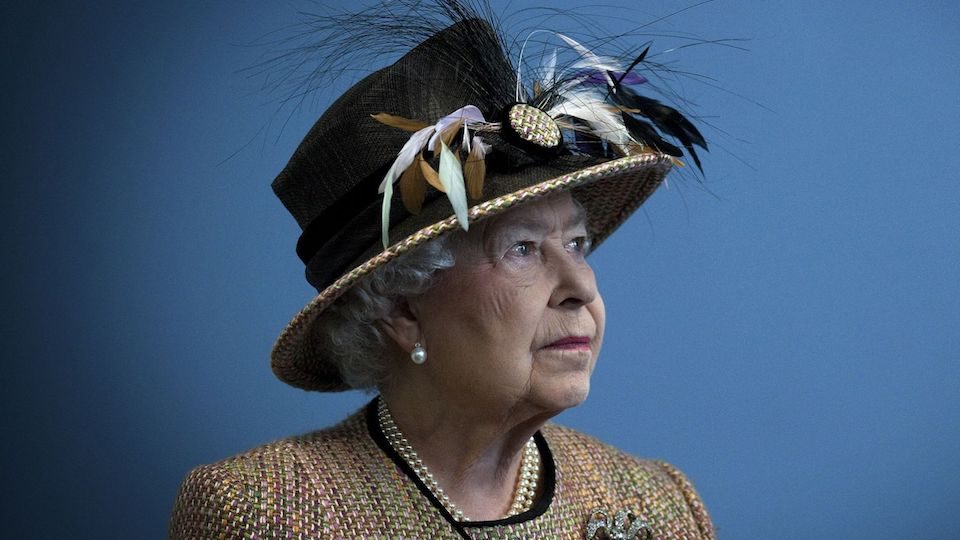Queen Elizabeth II died at the age of 96 on Thursday, Buckingham Palace confirmed. Great Britain says goodbye to the monarch with the longest reign in its history: she celebrated 70 years on the throne this 2022. She died at Balmoral Castle in Scotland after doctors said they had been concerned about her health Thursday.
“The queen died peacefully this afternoon,” the Royal Family announced on their social media accounts. Her son Carlos, who is now king, will return to London on Friday.
The Queen died peacefully at Balmoral this afternoon.
The King and The Queen Consort will remain at Balmoral this evening and will return to London tomorrow. pic.twitter.com/VfxpXro22W
— The Royal Family (@RoyalFamily) September 8, 2022
She did her duty to the end
“My life will always be dedicated to your service.”
It was a vow she made repeatedly throughout her unprecedented reign, most recently in a message marking the 70th anniversary of her accession to her throne.
Elizabeth II may not have been born to be a monarch, but once she intervened in her destiny, she steadfastly devoted her time on earth to duty and service to her.
Even in the last years of her life, as many speculated as to whether she would step back or perhaps even abdicate from her, she remained resolute in her devotion to her role.
As the coronavirus pandemic swept the world in 2020, the queen and her husband, Prince Philip, retreated from London to Windsor Castle. As in other moments of crisis, the nation sought reassurance from the monarch, who evoked references to war before firmly declaring “we will make it.”
Eager to remain present in public life amid lockdowns and physical distancing measures, she pivoted like so many of us and began working from home, engaging in virtual engagements and making more calls.
Following the Duke of Edinburgh’s death in April 2021, she resumed her royal duties with typical firmness.
Her first public appearance came a month after the death of her “strength and permanence” with the State Opening of Parliament.
She tested positive for covid-19 in February 2022, although she continued with some of her light duties despite suffering from mild cold-like symptoms.
In July, she traveled to her private Scottish home in Balmoral to begin her traditional summer vacation. On September 6, the Queen herself received former Prime Minister Boris Johnson at Balmoral Castle as she left office before greeting Liz Truss to ask her to form a government and become Prime Minister. The historic hearing marked the first time the 96-year-old monarch had carried out key duty at her own retreat in Aberdeenshire, rather than London’s Buckingham Palace.
The news of her death truly marks the end of an era for the UK, as most of her people have not known any other monarch at the helm.
Elizabeth Alexandra Mary, “Lilibet” to her friends, was born on April 21, 1926. And only a decade later, Elizabeth learned that she was truly destined to lead an empire.
And it was a ruse of history, the work of scandal: her uncle Eduardo abdicated so she could marry Wallis Simpson, a divorced American woman, the love of her life, but an impediment to the throne.
Elizabeth’s father became king. And she happened to be the heiress by accident. And she developed a deep sense of duty.
Even before she was crowned, Elizabeth devoted herself body and soul to playing her “royal” role.
“I declare before all of you that my whole life, long or short, will be dedicated to your service and to the service of this great imperial family to which we all belong.”
“I think I remember hearing that speech and I remember it very well, I certainly remember reading not many years later how she dedicated her life to the country; it was an example of exactly what I felt years later when I grew up; that’s what it was all about: to dedicate your life to your country.
For more than half a century, she led her empire and then watched it decline, in controlled descent, into what became known as the British Commonwealth of Nations, an association of now independent countries. 16 countries kept her as the symbolic head of state.
For decades she has endured everything that history and her family have thrown at her, with comforting composure.
Her reign began when Winston Churchill was Prime Minister.
“She remembers learning from her parents the importance of keeping America on your side during the war. And America went into the war. She remembers that very well. She remembers American soldiers, D-Day and all that. For her, it was a big part of her upbringing,” says Robert Hardman, author of Our Queen.
The British monarch has no political power, but Elizabeth had immense power as a figurehead, as demonstrated in 2011 in the first state visit by a monarch to neighboring Ireland since Ireland seceded from the United Kingdom.
Charles is now King of the United Kingdom
Charles immediately became king upon the death of her mother, Queen Elizabeth II.
“A moment of the greatest sadness for me and all members of my family,” Carlos said in a statement issued after the death of her mother.
As heir apparent since the age of three, she has been the longest-serving heir to the throne in British history.
Upon becoming sovereign, Charles has the option of taking whatever name she chooses for her reign. For example, King George VI’s real name was actually Albert. Two previous monarchs have been named Carlos.
Charles had already taken on some of the queen’s engagements this year, as her health had become enough of a concern to cancel some of her engagements, including the State Opening of Parliament.
Both Charles and Prince William had assisted in the queen’s daily duty. Both had been activated as Councilors of State, where the queen delegates her sovereign power for specific purposes, and were required to be even more available for those functions.

